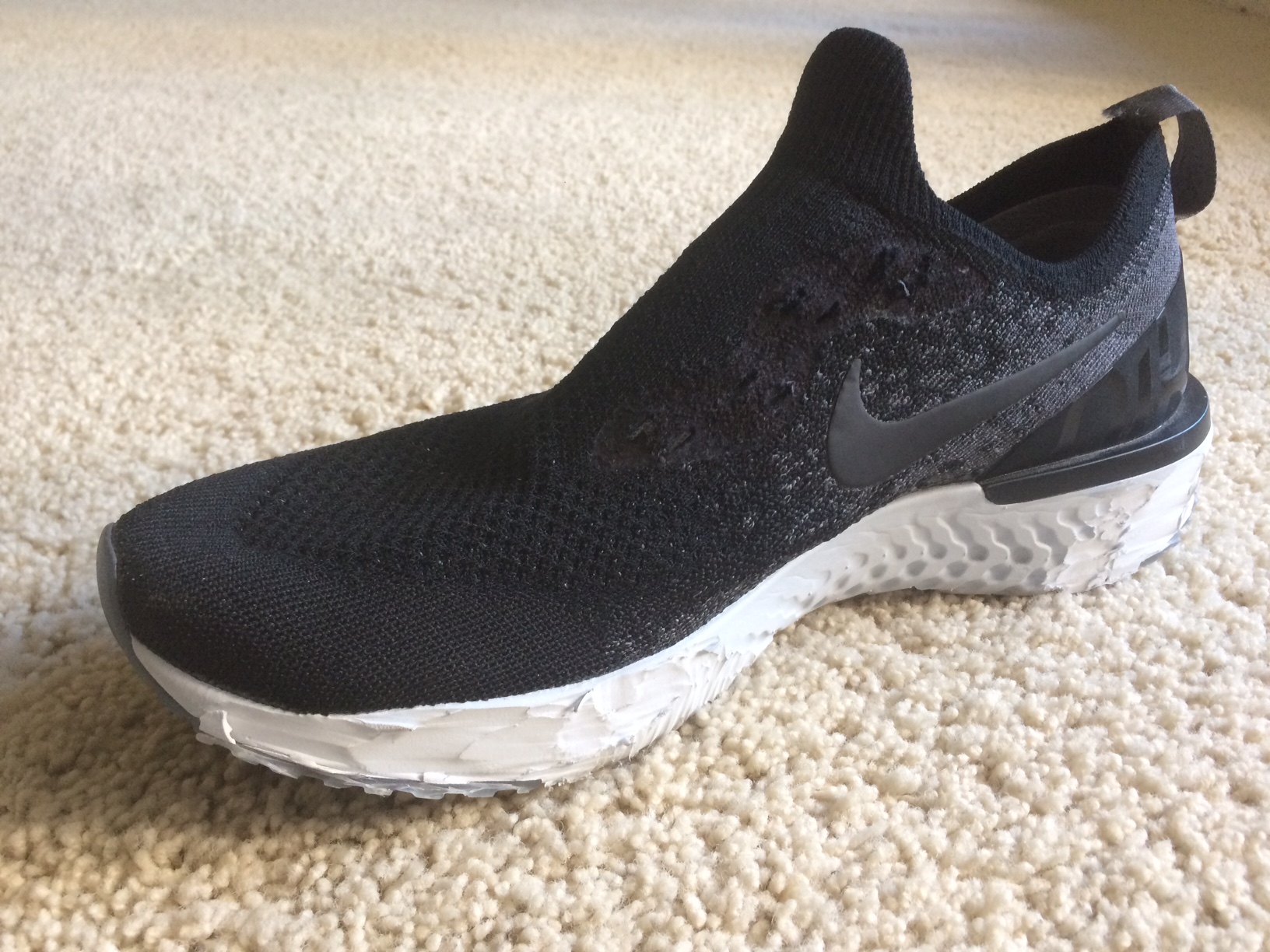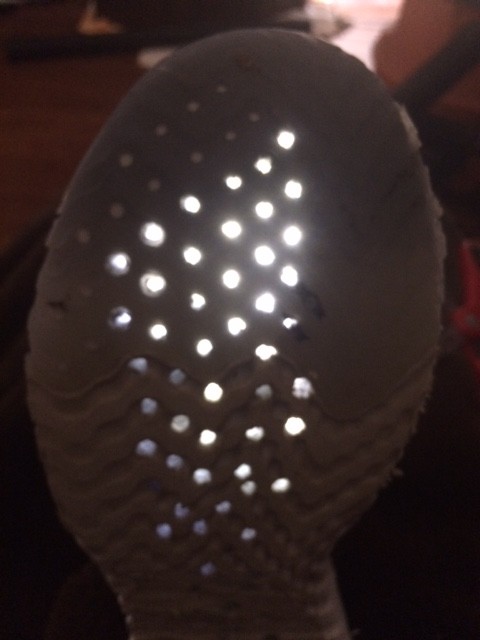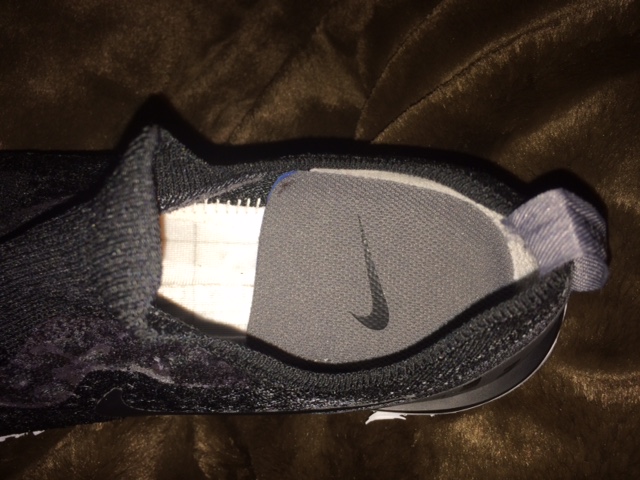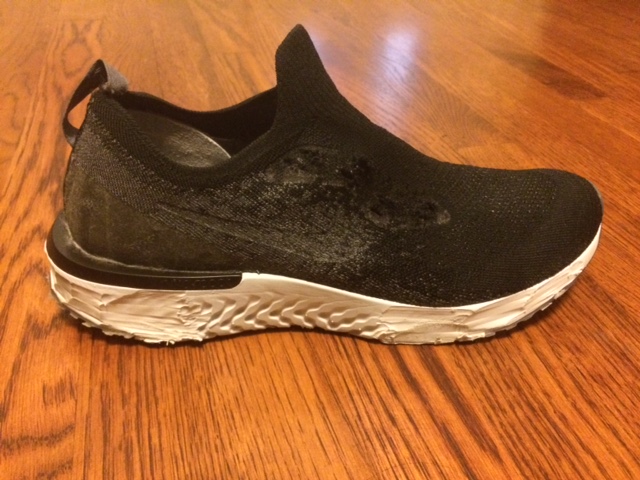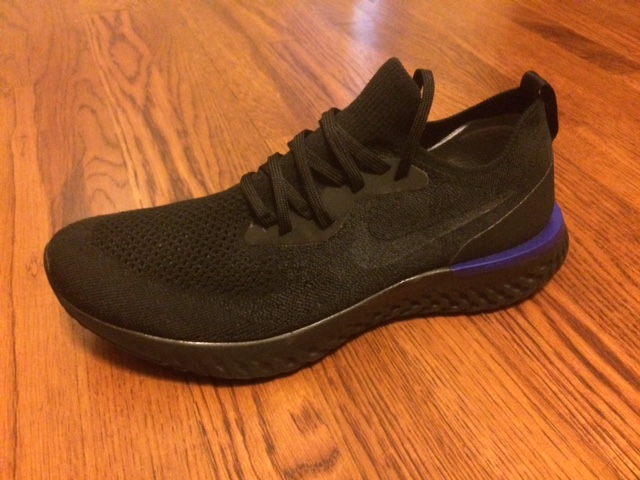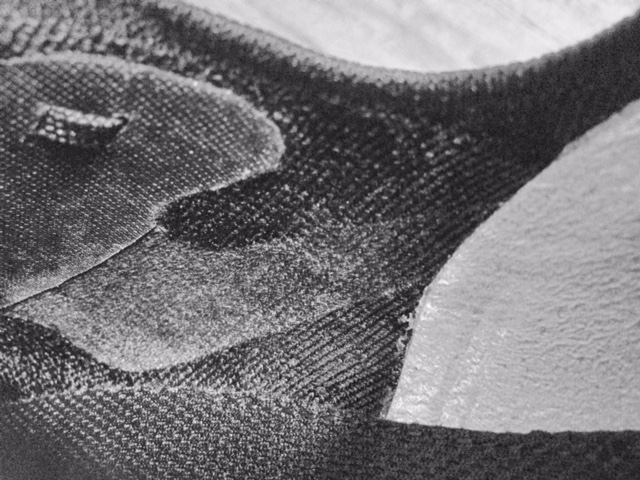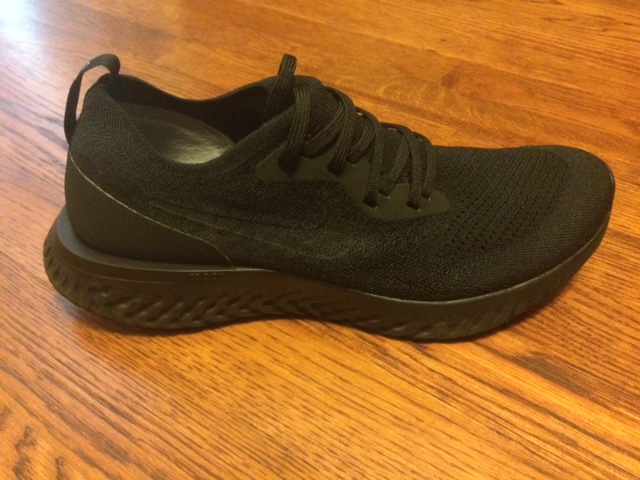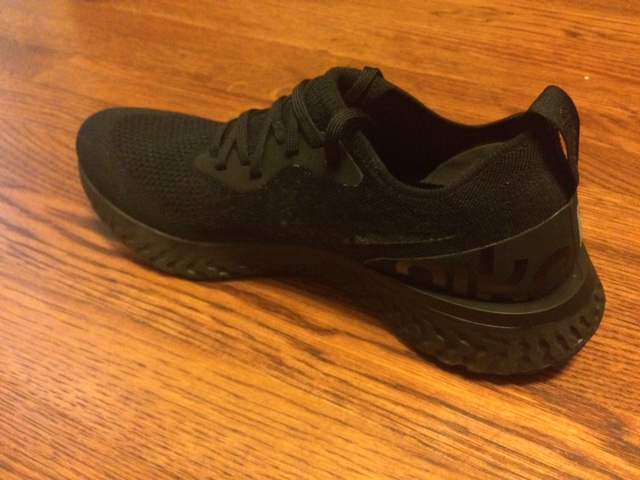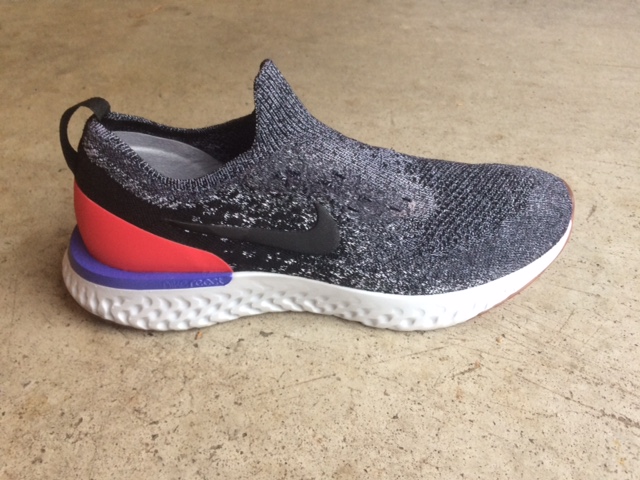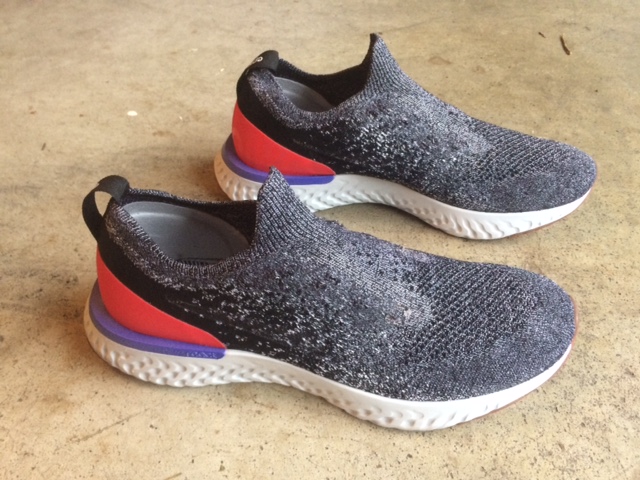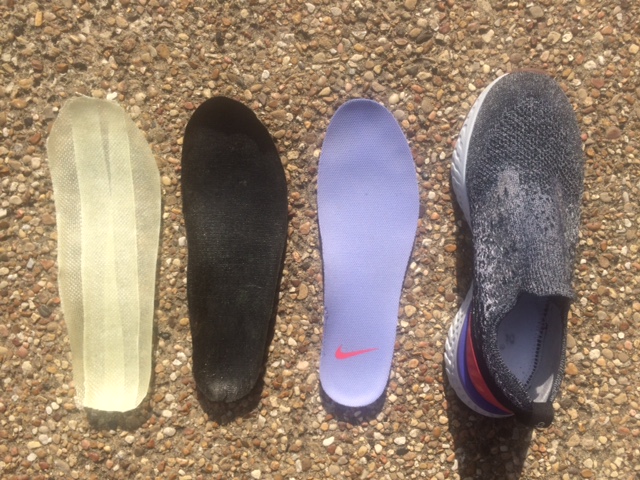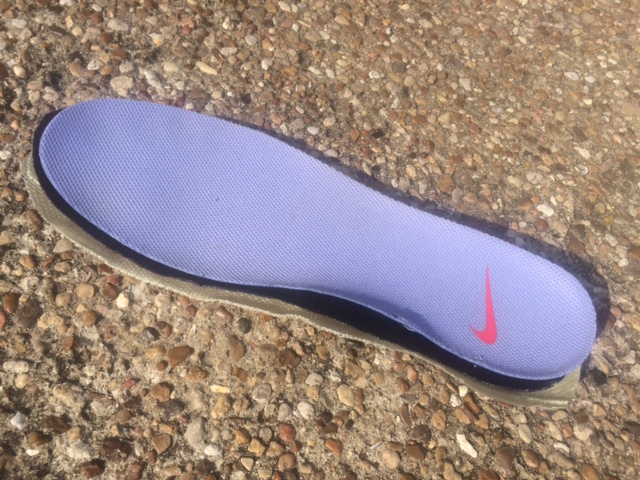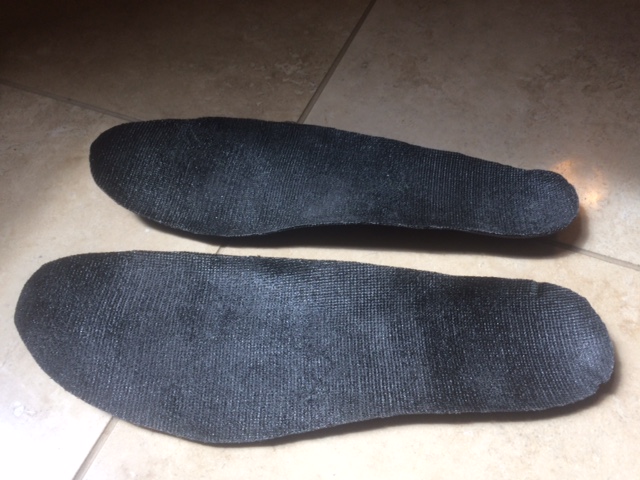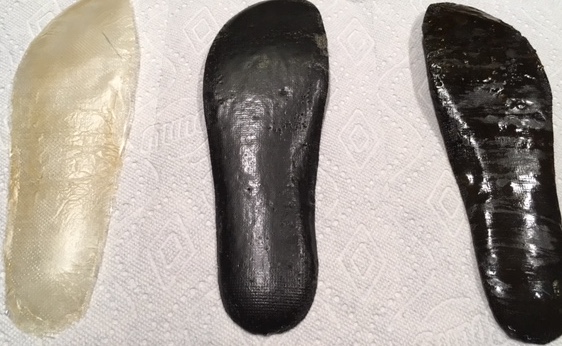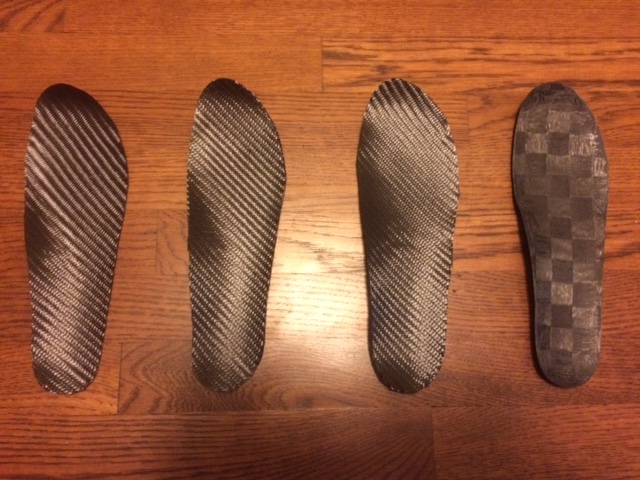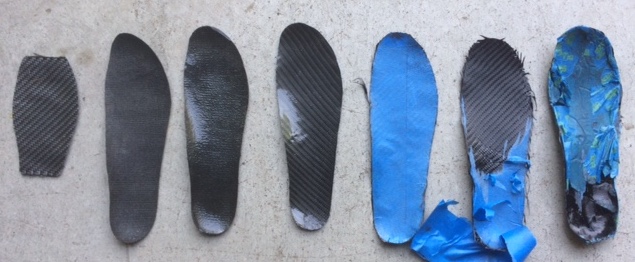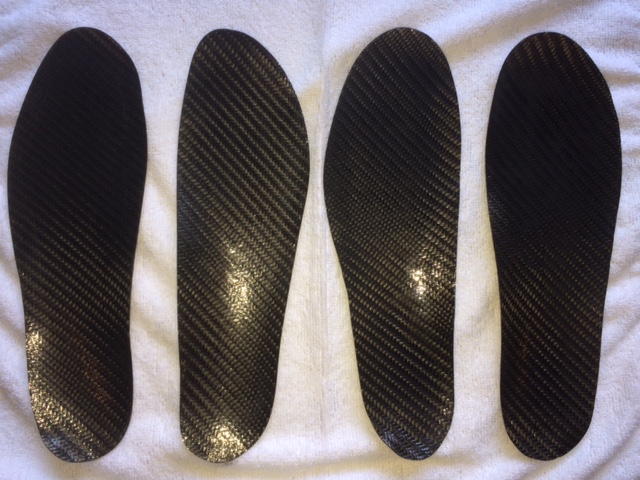- 425
- 245
- Joined
- Feb 28, 2018
I’d like to detail some experimental modifications I performed on my Epic REACT shoes. I wanted to work from smallest to biggest changes, in case I messed up and ruined the shoes.
1. First, most obvious mod, taking off the shoe laces. With the full flyknit upper, they don’t do much anyway. I found they do not help foot lockdown much, and if you do need the laces for lockdown, either you bought your shoes too big or have running form issues.
2. Remove shoe liners. This greatly enhanced the comfort and made the slip on like, well, slippers. The foot did become more loose, not so much I could not run in them, but it might cause some people blisters. After a few days of wearing them, my heel started to hurt somewhat.
3. Removing the outer lace hole reinforcement. The shoe looks a bit goofy with no laces but lace reinforcement panels. There is no issue with loss of reinforcement, as the main reinforcement is a full welded panel in the inside that includes the swoosh. The outside is just glued on cloth. On one shoe I used solvent, which worked well. On the other shoe I used brute force pulling, and it left a layer of glue behind that needed to be dyed black.
4. Cutting off midsole flare. I noticed that the bottom of the sole flairs much wider than the shoe. I assumed this was for stability and not just for show. It bothered me a bit, and sometime felt like I was wearing clown shoes. I took a sharp knife and just cut away the flair, making the sides square with the shoe. To my surprise, after several days of wearing, including running, I came to the conclusion the mod did not impact stability at all. My feet are just as stable with front, mid, or heel strike landings.
5. Creating artificial heel. I noticed that the shoe feels banana shaped on the bottom, which helps with heel to toe transition, but also bothered my arch during casual wear. I took a sharp knife and cut away some of the middle of the foam outsole, thus creating a small heel where the plastic heel counter is located. It seemed to relieve my arch pressure, but put additional pressure on my heel.
6. And finally, the craziest modification of all. I noticed that the bottom of my foot got really hot, especially when running longer distances. This surprised me, as the shoe is very breathable. So, I drilled 1/4" holes in the sole, from front to back, careful to keep close enough to the middle to not hit any of the stitching that holds the upper to the midsole. As the holes tended to self-close since the drill does not work with foam very well, I used a hot soldering iron to melt the jagged holes into more open rounded holes. This solved the heat retention problem, and it really feels strange having cool air hit the bottom of your feet when running. Much to my surprise, the REACT foam has much more bounce now, as there is more weight per square area of foam, as I have cut and drilled much away.
Anyway, crazy to do all this to a new pair of expensive shoes, but they are still not only usable, but runnable. The only mod that impacted running ability was creating the low heel, but even that is bearable. My shoes are now much more comfortable, cooler, and lighter. (I weighed the size 10 pair as 400g even.) As I use these for triathlons, they pull on very fast in T2. And in the summer heat, on sun soaked roads, my feet stay cooler.

1. First, most obvious mod, taking off the shoe laces. With the full flyknit upper, they don’t do much anyway. I found they do not help foot lockdown much, and if you do need the laces for lockdown, either you bought your shoes too big or have running form issues.
2. Remove shoe liners. This greatly enhanced the comfort and made the slip on like, well, slippers. The foot did become more loose, not so much I could not run in them, but it might cause some people blisters. After a few days of wearing them, my heel started to hurt somewhat.
3. Removing the outer lace hole reinforcement. The shoe looks a bit goofy with no laces but lace reinforcement panels. There is no issue with loss of reinforcement, as the main reinforcement is a full welded panel in the inside that includes the swoosh. The outside is just glued on cloth. On one shoe I used solvent, which worked well. On the other shoe I used brute force pulling, and it left a layer of glue behind that needed to be dyed black.
4. Cutting off midsole flare. I noticed that the bottom of the sole flairs much wider than the shoe. I assumed this was for stability and not just for show. It bothered me a bit, and sometime felt like I was wearing clown shoes. I took a sharp knife and just cut away the flair, making the sides square with the shoe. To my surprise, after several days of wearing, including running, I came to the conclusion the mod did not impact stability at all. My feet are just as stable with front, mid, or heel strike landings.
5. Creating artificial heel. I noticed that the shoe feels banana shaped on the bottom, which helps with heel to toe transition, but also bothered my arch during casual wear. I took a sharp knife and cut away some of the middle of the foam outsole, thus creating a small heel where the plastic heel counter is located. It seemed to relieve my arch pressure, but put additional pressure on my heel.
6. And finally, the craziest modification of all. I noticed that the bottom of my foot got really hot, especially when running longer distances. This surprised me, as the shoe is very breathable. So, I drilled 1/4" holes in the sole, from front to back, careful to keep close enough to the middle to not hit any of the stitching that holds the upper to the midsole. As the holes tended to self-close since the drill does not work with foam very well, I used a hot soldering iron to melt the jagged holes into more open rounded holes. This solved the heat retention problem, and it really feels strange having cool air hit the bottom of your feet when running. Much to my surprise, the REACT foam has much more bounce now, as there is more weight per square area of foam, as I have cut and drilled much away.
Anyway, crazy to do all this to a new pair of expensive shoes, but they are still not only usable, but runnable. The only mod that impacted running ability was creating the low heel, but even that is bearable. My shoes are now much more comfortable, cooler, and lighter. (I weighed the size 10 pair as 400g even.) As I use these for triathlons, they pull on very fast in T2. And in the summer heat, on sun soaked roads, my feet stay cooler.
